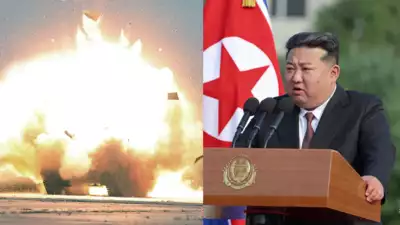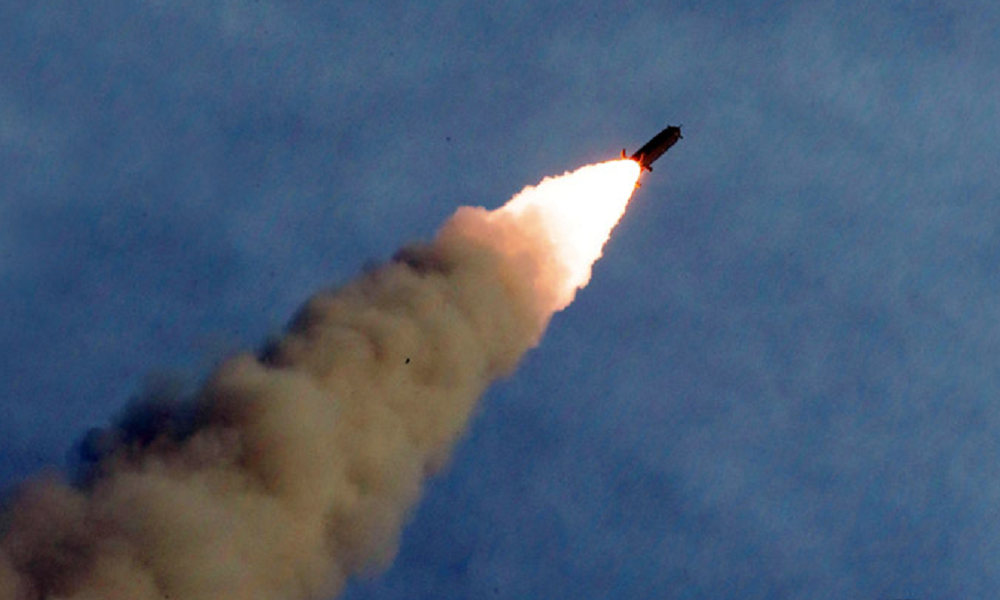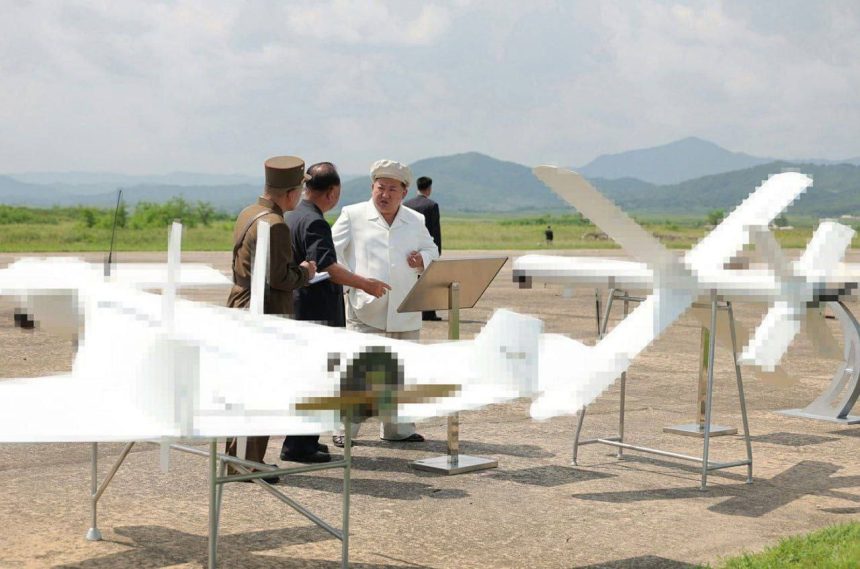North Korea is ramping up its military capabilities with a new directive from leader Kim Jong Un, who recently ordered the “mass production” of attack drones. This push for advanced unmanned aerial vehicles comes amid growing concerns over North Korea’s deepening military cooperation with Russia, a partnership that has raised alarm among global security analysts.
The unveiling of these drones took place in August, marking a significant advancement for Pyongyang’s military technology. Experts attribute much of North Korea’s recent drone development to its budding alliance with Moscow, suggesting a potential exchange of technology and resources that could impact regional security dynamics.
As these ties deepen, South Korean President Yoon Suk Yeol has expressed his concerns that sensitive Russian military technology might be transferred to North Korea, a move that could heighten tensions across the Korean Peninsula and beyond.
According to North Korea’s state-run Korean Central News Agency (KCNA), Kim Jong Un personally oversaw the testing of these drones. The drones, developed by the North’s Unmanned Aerial Technology Complex, are intended to strike both land and sea targets. These unmanned aerial systems are effectively “suicide drones,” designed to crash into enemy assets carrying explosive payloads.
The KCNA report emphasized the precise capabilities demonstrated during testing, stating that the drones hit their intended targets after flying along pre-planned routes, showcasing both accuracy and reliability.

Kim Jong Un reportedly underscored the need for North Korea to establish a robust serial production system for these drones. His directive to “go into full-scale mass production” suggests a strategic shift toward enhancing Pyongyang’s offensive drone capabilities as part of its broader military strategy.
The production of these drones, which can be operated with relative ease and at a lower cost than traditional military equipment, highlights North Korea’s focus on cost-effective yet versatile weaponry.
READ ALSO: Congressional Democrats Push Biden to Sanction Israeli Officials Over Rising West Bank Violence
KCNA described the suicide drones as versatile tools in North Korea’s arsenal, with a broad range of applications and low production costs. Kim emphasized their value, calling them an “easy-to-use” asset that enhances the country’s strike potential across different theaters of combat.
This emphasis on unmanned aerial systems aligns with North Korea’s recent focus on integrating advanced technology into its overall defense strategy, seeking both efficiency and strategic flexibility.
As North Korea and Russia’s partnership grows, the international community remains watchful. Any transfer of Russian technology to North Korea could shift the balance of power in East Asia, potentially leading to an arms race among neighboring countries concerned about the security of the region, NDTV.
North Korea’s expanding drone program is sparking new concerns, with recent expert analyses suggesting that its drones bear a resemblance to Israeli-made HAROP, Russian Lancet-3, and Israeli HERO 30 models. North Korea may have acquired these designs through Russia, which could have obtained them from Iran—potentially via cyber theft from Israel.
In 2022, North Korea sent drones across the South Korean border that Seoul’s military found difficult to intercept due to their small size. This year, Pyongyang escalated provocations by launching trash-filled balloons as a response to anti-regime leaflets sent from South Korea.

Experts believe North Korea could eventually deploy drones for similar operations, potentially using balloons to send leaflets southward.
The rising threat prompted South Korea to establish a dedicated drone operations command in 2023. Tensions have continued to worsen, with North Korea amending its constitution in October to formally designate South Korea as a “hostile” state, underscoring the deteriorating relations since Kim Jong Un declared Seoul the North’s “principal enemy” earlier this year.
Meanwhile, North Korea has continued missile tests and demolished infrastructure connecting the two Koreas, signaling an ongoing hardline stance.

